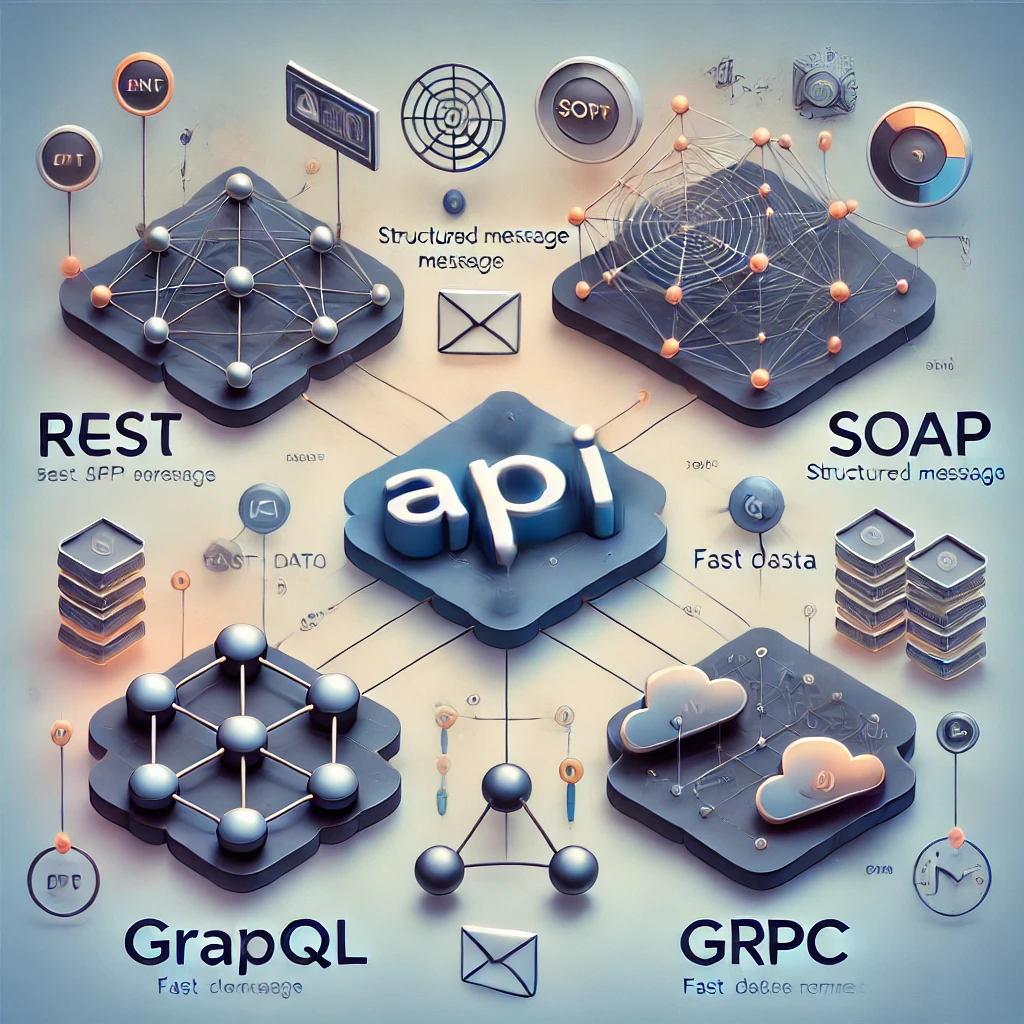Application Programming Interfaces (APIs) are essential to how software applications communicate and function in today’s digital world. APIs serve as the backbone of connectivity between different systems, allowing for seamless data exchange and interaction across platforms. However, not all APIs are built the same—different architectural styles have evolved over time to address specific use cases, performance requirements, and challenges.
In this blog, we will explore the key API architectural styles and their unique characteristics, including RESTful, GraphQL, SOAP, gRPC, WebSockets, and MQTT. Each of these architectures serves a different purpose in enabling applications to interact with each other efficiently and securely.
1. RESTful APIs: Simplicity and Standardization
A RESTful (Representational State Transfer) API is one of the most popular architectural styles, widely adopted due to its simplicity and flexibility. It uses standard HTTP methods such as GET, POST, PUT, and DELETE for communication, making it easy to implement and understand.
Stateless: RESTful APIs are stateless, meaning each request from the client to the server must contain all the information the server needs to process it. No client session is stored on the server.
Scalability: The stateless nature and use of standard HTTP methods make REST APIs scalable and suitable for distributed systems.
Caching: REST APIs leverage caching, improving performance and reducing server load.
Example Use Case: REST APIs are perfect for web services where lightweight, stateless communication between client and server is necessary, such as retrieving data from a public API like Twitter or GitHub.
2. GraphQL: Efficient Data Retrieval
GraphQL offers a flexible and efficient way for clients to request only the data they need. Unlike REST, where multiple endpoints might be needed to gather related data, GraphQL allows a client to send a query to the server specifying the exact data fields it requires.
Client-Specific Queries: Clients can request exactly the data they need, and no more. This reduces the amount of data transferred and optimizes performance.
Single Endpoint: Instead of multiple endpoints, GraphQL operates through a single endpoint, simplifying the API structure.
Dynamic Data Fetching: Clients have more control over the data they fetch, making GraphQL particularly useful in scenarios where APIs need to provide different datasets to various client types (e.g., mobile vs. desktop).
Example Use Case: Companies like Facebook and Shopify use GraphQL for their APIs, allowing for efficient data management in complex applications.
3. SOAP: Secure and Reliable
SOAP (Simple Object Access Protocol) is an older architectural style that relies on XML-based messaging and offers built-in features for security, transactions, and ACID (Atomicity, Consistency, Isolation, Durability) compliance.
Protocol-Based: SOAP is a protocol rather than an architectural style, which means it follows strict rules about message format and behavior.
Security: SOAP APIs are known for their robust security features like WS-Security, making them suitable for applications where security is critical.
Transactions: SOAP supports transaction management, making it ideal for financial or business applications that require reliability and consistency.
Example Use Case: SOAP APIs are often used in enterprise-level applications such as banking and e-commerce, where security and data integrity are vital.
4. gRPC: High-Performance Communication
gRPC (gRPC Remote Procedure Call) is a modern, high-performance framework designed by Google, optimized for fast and efficient communication between microservices. It uses Protocol Buffers (a binary format) for serialization, which makes it faster than traditional JSON-based APIs.
Efficient: By using binary serialization and streaming, gRPC is highly efficient in terms of both speed and payload size.
Strong Typing: gRPC supports strong typing and allows for defining service contracts with Protocol Buffers, ensuring that both the client and server understand the data structures.
Streaming: gRPC supports full-duplex streaming, which allows clients and servers to send and receive data simultaneously.
Example Use Case: gRPC is widely used in microservice architectures, especially in environments that demand low-latency communication, such as Google’s internal systems and Kubernetes.
5. WebSockets: Real-Time Communication
WebSockets provide a way to maintain a constant connection between the client and server, enabling real-time, full-duplex communication. This makes it ideal for applications where instant updates are needed without constantly polling the server for changes.
Real-Time Updates: WebSockets allow for bidirectional communication, making it possible for the server to send updates to the client as soon as new data becomes available.
Full-Duplex Communication: Both the server and client can send messages at any time, ensuring continuous data flow.
Single Connection: Unlike traditional HTTP requests, WebSockets maintain a single open connection, reducing overhead and improving performance in real-time applications.
Example Use Case: WebSockets are commonly used in real-time applications like chat apps, stock market updates, and multiplayer online games.
6. MQTT: Lightweight Messaging for IoT
MQTT (Message Queuing Telemetry Transport) is a lightweight messaging protocol designed for low-bandwidth, high-latency networks, making it ideal for Internet of Things (IoT) devices.
Low Bandwidth: MQTT is optimized for environments with limited bandwidth, making it perfect for devices with intermittent connectivity.
Publisher-Subscriber Model: MQTT uses a pub-sub model, where devices (publishers) send messages to a central broker, and other devices (subscribers) receive those messages if they are subscribed to the appropriate topics.
IoT Focus: Its lightweight nature makes MQTT the go-to protocol for IoT devices, especially those running on constrained resources like sensors or wearables.
Example Use Case: MQTT is popular in IoT systems like smart home devices, where low-power devices need to communicate efficiently with a central server.
Conclusion : Understanding API Architectural Styles
In the world of software development, understanding the various API architectural styles is essential to building efficient and scalable applications. Whether you need the simplicity of RESTful APIs, the flexibility of GraphQL, the security features of SOAP, or the real-time capabilities of WebSockets, each architectural style is designed to meet specific needs.
For high-performance microservices, gRPC provides fast, reliable communication, while MQTT serves as the go-to for IoT systems where bandwidth and power efficiency are critical. By selecting the right API architecture, developers can ensure optimal performance, security, and flexibility in their applications.


















